| Ab 1957 produzierte PZO das L40x64 Spektiv (Luneta). Dies gab es in verschiedenen Lackierungen (weiß, schwarz, blau, grün, gelb) in einem Metalltransportkasten mit Stativ(beinen), Baumschraube und teilweise einem 2. 20x Okular sowie gelbem Filterglas und Reinigungspinsel. Es wurde zur Trefferkontrolle bei Sportschützen genutzt, aber auch als Beobachtungsfernrohr in der Forstwirtschaft, Astronomie u.a. (s. Bilder Katalog u. Schießstand). Das Monokular hat einen konischen Objektivtubus mit einem Abdeckung der Objektivfassung und einem Stativadapter sowie einem typischen Porro-1-Prismegehäuse. Das Prismengehäuse hat eine Steckokularfassung mit einem Feststellring. Das Okular hat eine Dioptrieneinstellung von + bis -5 und eine Kunststoffaugenmuschel. Der Stativadapter hat ein übliches 1/4 Inch-Gewinde (z.B. für die Baumschraube) oder es werden an ihm drei Metallbeine angeschraubt. Das Spektiv hat eine Visiereinrichtung. Die Optik ist blau vergütet. |
Since 1957 PZO made the L40x64 spotting scope (Luneta). It was issued in diffent colours (white, black, blue, green, yellow) in a metal carrying case including tripod legs, a tree screw, and sometimes a second 20x eyepiece as well as a filter glass or a cleaning brush. It was used for target cotnrol on shooting ranges or as an observation scope for forestry or astronomy etc. (see catlogue and shooting range pictures). The monocular has a conical objective tube with a covering ring over the objective frame and a tripod adapter combined with a typüical porro 1 prism body. The prism housing comes with a slip-in eyepiece tube with a locking ring. The eyepice has a dioptre adjustment ranging from plus to minus five and a plastic eyecup. The tripod adapter has a regular 1/4 inch thread, for example for use with the tree screw, or you can screw three legs to it. The spotter has aaiming sight. The optics are coated blue. |
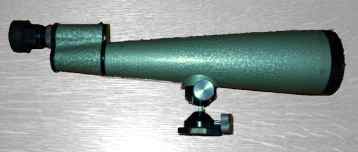
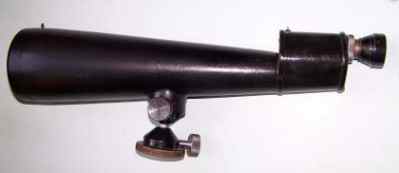
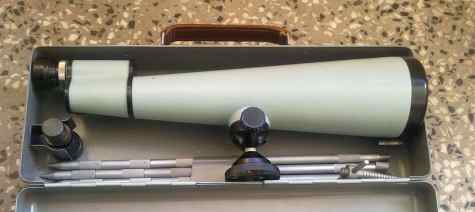
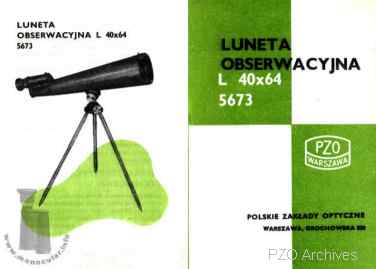
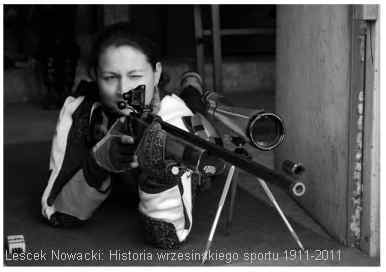
| Das vorliegende Exemplar ist blau lackiert und die einfach verschraubten Deckel und die Objektivfassung sowie das Okular sind schwarz lackiert. Der Deckel trägt das PZO-Linsenlogo, die Modellbezeichnung, "Made in Poland" sowie die Nr. 85609. Der Objekitvtubus ist auf der Oberseite mit "WOSR" beschriftet. Dies steht für "Wrzesinskie Obiekty Sportowo-Rekreacyjne", eine Polnische Sport- und Freizeiteinrichtung der Kreises Wrzesnia. | The model shown here has a blue finish. The cover plates having one screw, the objective frame, and the eyepiece are painted black. The top cover is marked with the PZO lens logo, the model name, "Made in Poland" as well as Nr. 85609. The objective tube is inscribed WOSR" on its top. This stands for "Wrzesinskie Obiekty Sportowo-Rekreacyjne", a Polish sport and recreation community in the Wrzesnia district. |
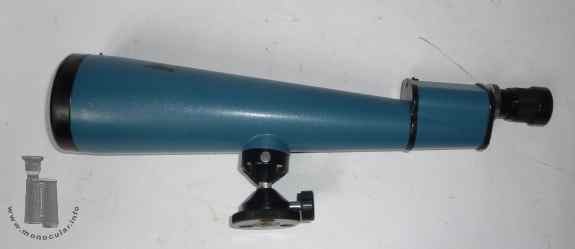
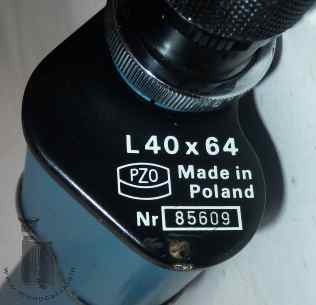
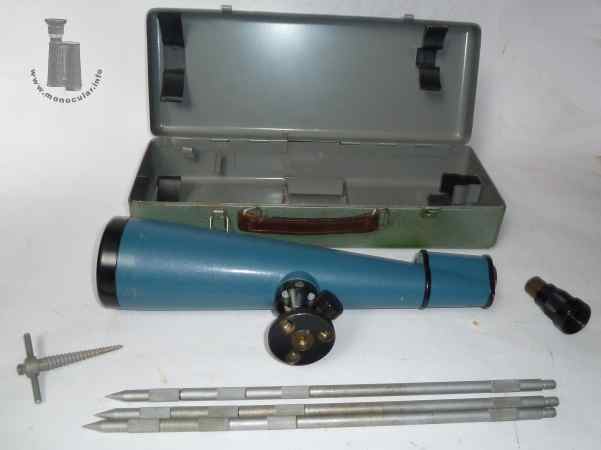
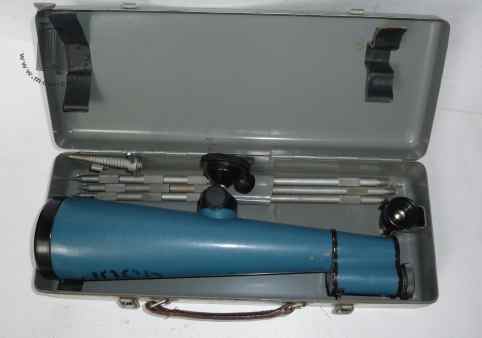
| Das Spektiv ist 40cm lang. Der 28cm lange Objektivtubus verbreitert sich von 42mm auf 83mm im Durchmesser. Das Gehäuse ist oben 50x50mm und unten 54x54mm breit. Der Feststellring ist 33mm, das Okularstück 26mm, der Fokussierungsteil 29mm und die Augenmuschel 34mm im Durchmesser. Der Stativadapter steht ca. 55mm hervor. Das 40x64 wiegt 1349g. Der Transportkasten ist 390x145x85mm und wiegt mit dem Zubehör 2181g. |
The spottings scope is 40cm long. The 28cm long objective tube increases from 42mm to 83mm in daimeter. The hosuing is 50x50mm at its top and 54x54mm at its bottom. The locking ring is 33mm, the eyepiece 26mm, the focusing ring 29mm, and the eyecup 34mm in diameter. The tripod adapter is about 55mm high. The 40x64 weighs 1349g. The carrying case measures 390x145x85mm and weighs 2181g with the accessories. |
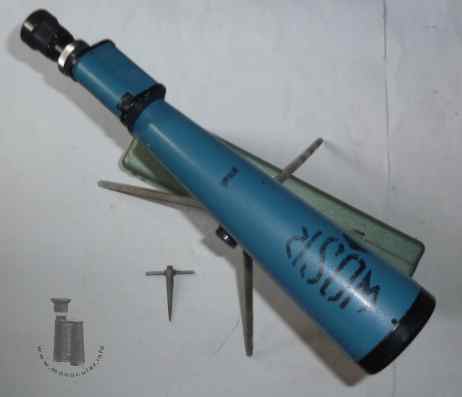
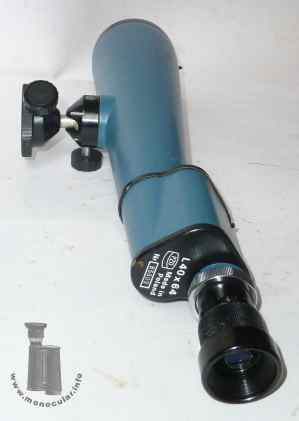
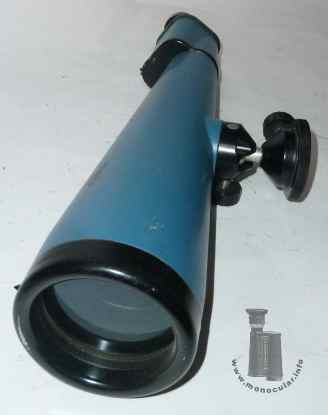
Fotos: 1-6 Internet(auktionen); 7-13 Zeun

